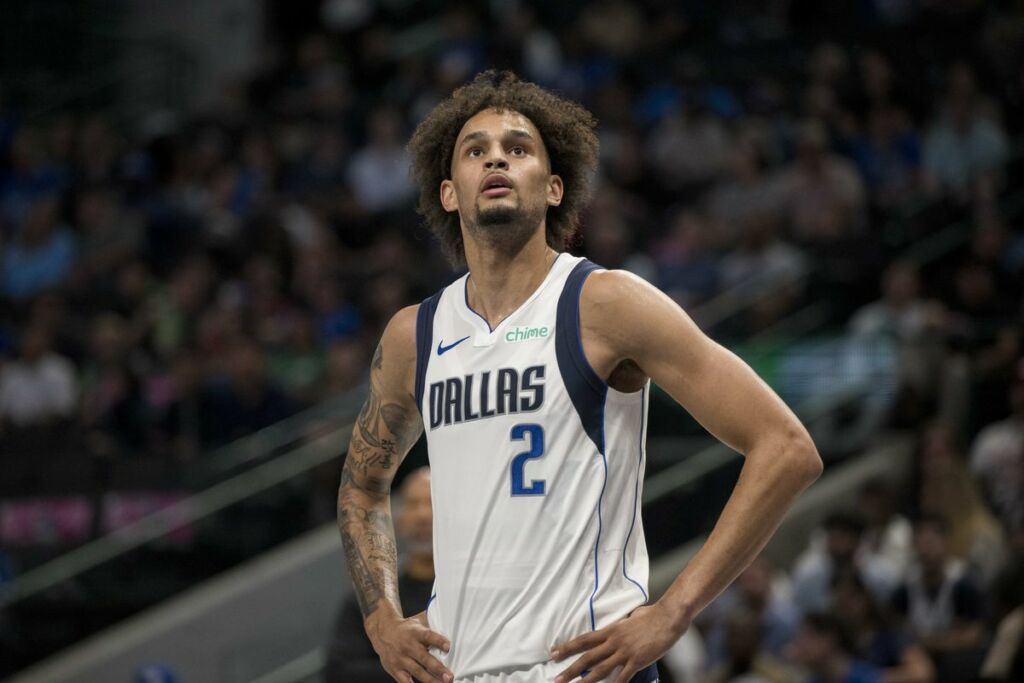-
 June 24, 2024, 10:39 am
June 24, 2024, 10:39 amLast Updated on June 24, 2024 8:11 pm by Keston Paul | Published: June 24, 2024
Since the NBA is cracking down on the punishments for high-spending teams with the introduction of the cap aprons, finding plug-and-play talent on rookie-scale contracts will become much more important. While this draft class isn’t considered the best for top-end talent, it is not short of useful players who could fulfil a smaller role for teams.
Last year, we pinpointed Trayce Jackson-Davis as one of the players who could have an immediate impact in the NBA by just doing the basics and that came to fruition with the Warriors as the season progressed. We also just saw the impact of Dereck Lively II for the Mavs in their run to the NBA Finals.
NBA-ready doesn’t necessarily mean these players will have a consistent impact for your fantasy leagues in 2024-25, but if these players can crack a rotation early on then their chances of gaining extra minutes due to injuries, poor play by the options ahead of them or by their own general merit would be increased. That is where the potential for some fantasy gains would appear.
Donovan Clingan, C, UConn
In recent years, we have seen that big men can translate well to the NBA if they have a good foundation around them. Donovan Clingan was an integral part of the formidable back-to-back UConn championship units and was employed in a fashion which should help his translation to the NBA. The UConn offense utilized a lot of off-ball movement which required frequent screening, so that part of Clingan’s game is already very developed. Additionally, he can work in dribble-handoffs and as a passer in general, which can help him to stand out compared to the average “rim runner” mold of bigs. He doesn’t have much of a face-up game, but the touch around the basket (especially with his right hand) is good. In case you aren’t aware, Clingan is essentially 7’2″ with a 7’7″ wingspan and you can’t teach that natural size. He is adequately mobile for his size and projects to specialize as a drop big, but has shown hints of becoming more versatile in other pick-and-roll coverages as well.
Clingan missed around a month in the 2023-24 college season with a foot injury and durability will always be a concern for players of his build. There was also speculation regarding his conditioning as he only averaged around 23 MPG, causing questions over whether it was due to injury or just his size. He is unlikely to be asked to play anything close to 30 MPG immediately, likely topping out in the mid-20s, but even in that amount of playing time he should be able to do damage in rebounds, blocks and FG% while providing some dimes on top of it. If he lands on a team like the Wizards who lack high-upside center talent, Clingan may hover around 12-team value from the start of the season. In other destinations, he may be on and off the radar like Lively was this past season, depending on how the minutes fluctuate.
Dalton Knecht, G/F, Tennessee
Dalton Knecht is an intriguing player and he is definitely the type that teams looking to “win now” will love in the draft. Knecht offers some immediate punch as a scorer, which should mostly come via his value as a 3-point sniper in all types of situations (movement, spot-up, off the dribble). He had a notable workload in college and actually proved that he could be a three-level scorer, although he obviously won’t be asked to do as much of that in the NBA. Did I mention that he is 23 years old? Well he is. So, that does fit the archetype of a plug-and-play guy as well.
There are two concerns with Knecht. One is his defense, as he isn’t someone teams will want to expose on-ball, but he can be hidden with a good construct around him. However, while he was the star in Tennessee, he won’t be for his NBA team so it could be less ideal. Additionally, there are some chin-scratching thoughts about how scaling back in the NBA could affect his rhythm. Considering how often he touched the ball, there may be a bit of a hill to climb in adjusting to a lesser role. Shooting is a premium skill though and some teams struggle for scoring from their second units, so Knecht can undoubtedly make an impact as soon as Year 1. The 12-team valuation for fantasy as a rookie would likely be as a streamer at best though, depending on the ups and downs of his season.
Devin Carter, G, Providence
Devin Carter’s calling will be his defense. You are guaranteed to see some “he got that dog in him” comments floating around on social media when people describe him, but it is for good reason. He excels at the point-of-attack and is just disruptive in general. Despite a seemingly smallish stature at around 6’2″ to 6’3″, you wouldn’t think of him that way when you see him play. For one, he averaged 8.7 rebounds per game in college this past season to go with one block and 1.8 steals. If your team lacks perimeter defense, you will want to hear Carter’s name when your team is picking on draft night. The defense will earn him minutes.
There are some questions about Carter offensively, but he shot close to 38% from three this past season, albeit, he did not have as good a track record as a shooter during his prior years in college. Like many of the prospects on this list, he is older at 22 years old, but that does not mean he doesn’t have any upside. He can provide some secondary creation for himself and others, and perhaps even be used in guard-to-guard screening actions and that versatility should help his floor as a player. Once again though, don’t expect much for shallower fantasy leagues in Year 1 besides some stints as a streamer.
Tristan da Silva, F, Colorado
Tristan da Silva is a 6’9″ 23-year-old who projects to be a two-way, floor-spacing wing. He is an excellent shooter, hitting 39.5% from three in 2023-24 and he was at 39.4% and 37.3% from deep in his prior two seasons as well. Those numbers are awesome, simply put. Despite his elite length, he is a bit slender so he will likely play more as a SF than a PF, but he has the skills to do so when the shooting is combined with an ability to attack closeouts and create a little off the dribble. The handle isn’t tight enough for consistent self-creation but that isn’t something a team will be asking him to do. He can post up mismatches too, so teams can’t get away putting a smaller player on him. On top of all that, there are positive flashes of passing with both hands, though it cannot exactly be called a strength yet.
Da Silva’s main issue is a lack of explosive athleticism and while he is a solidish defender, it can show up as quicker players may get by him. He can use his length to curtail that to some degree but it isn’t perfect. Of course, even NBA-ready players can’t be completely polished, but the potential for some points, threes, rebounds (even if his lack of strength can be an issue on the glass) and a few defensive stats makes him an intriguing streaming target for fantasy if he ever drops into notable minutes during his rookie campaign. He should be in a rotation regardless and if his team is very desperate for wing play then he may have a shot at starting or at least getting good minutes off the bench early on.
Zach Edey, C, Purdue
Zach Edey is a massive center, standing at 7’5″ and weighing in at 300 pounds. Edey is a “he is who he is” player at 22 years old. Even in the NBA, his size should be a mismatch and he utilized it to great effect as a scorer in college. While he shouldn’t be prolific to the same degree, he should be somewhat effective nonetheless. Edey moves well enough for his size but he is still a bit of a “lumberer” so teams employing him will be limited to drop coverage and it may still be questionable whether or not he can truly be super-effective in that scheme against NBA creators. Of course, his size gives him natural rim protection advantages, but he may not be quick enough to cover enough ground against NBA athletes in situations where he isn’t under the basket. Edey will also naturally be a good rebounder because it would be difficult for him not to be and the college stats back that up.
Can he be a starter? Probably, but likely not. However, Edey may be a pretty useful backup big, and considering he was able to play big minutes in college, he would have a lot of energy to burn. In some podcast commentary (I can’t remember the pod, sorry), there was the mention of Naz Reid showing how successful a “big man sixth man” could be. While Edey is a very different type of player, it was still something worth some merit. Imagine tired players or weaker second units having to face a 7’5″ tank for 19-to-23 MPG. That does not sound fun for anyone except the viewers. If he does get any spot starts along the way in such a scenario then the fantasy upside could certainly be fun as well, but at this point we are just speculating.

